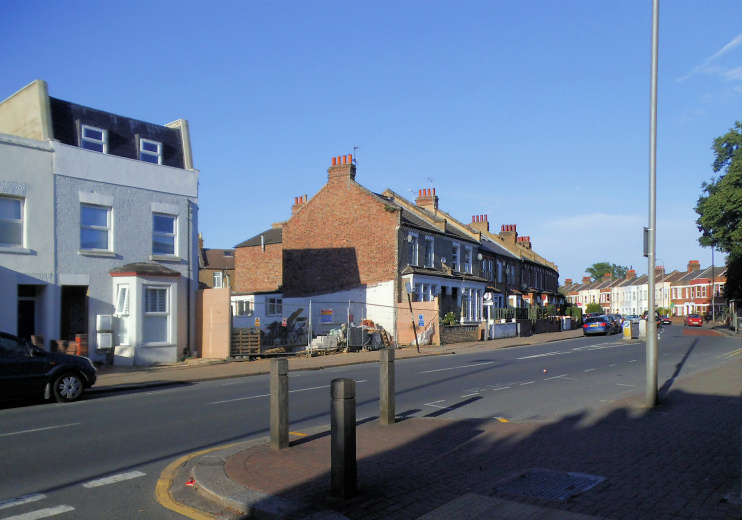Wandsworth Summerstown Planning Permission: Your Complete Guide to Successful Development
Nestled in the vibrant borough of Wandsworth, Summerstown is a unique blend of urban charm and historical significance. As one of London’s hidden gems, this area attracts both residents and developers seeking to capitalize on its rich character and promising potential. However, whether you are considering extending your home or launching a new construction project, understanding the intricacies of planning permission in Summerstown is crucial. This comprehensive guide aims to provide you with all the essential information, practical insights, and strategic advice needed to navigate the planning permission process smoothly.
Understanding Planning Permission in Summerstown
What is Planning Permission?
Planning permission is a formal consent granted by the local planning authority, which in this case, is the Wandsworth Borough Council. It is a legal requirement for a wide range of construction and development activities, ensuring that all projects comply with local policies and broader environmental and community considerations. The purpose of planning permission is not only to maintain the aesthetic and historical integrity of Summerstown but also to foster sustainable development that aligns with the community’s long-term vision.
The Charm and Historical Context of Summerstown
Summerstown is more than just a residential district; it’s a tapestry of historical narratives and architectural wonders. Its rich past dates back to the 19th century, and many of its streets are lined with Victorian terraced houses, charming cottages, and iconic landmarks that tell stories of the bygone eras. This historical backdrop makes it even more critical for any development project to consider the area’s cultural heritage and architectural significance.
Types of Developments Requiring Planning Permission
In Summerstown, planning permission is typically required for several types of developments. Each type of development carries its own set of rules and requirements, making it essential for applicants to understand the specific criteria:
New Builds: Constructing a new residential or commercial property from scratch requires planning permission. This includes everything from single-family homes to large apartment complexes and office buildings.
Major Extensions and Alterations: If you’re planning a significant alteration to your existing property—such as adding a second floor, constructing a large extension, or altering the façade—you will likely need to apply for planning permission.
Change of Use: Converting a building from one use class to another, such as changing a residential property into a commercial office space, typically requires planning permission. This process ensures that changes align with the area’s zoning regulations and community needs.
Demolition Works: If your project involves the demolition of existing structures, especially those located within conservation areas or those that are listed, planning consent is necessary. This is to ensure the protection of historically significant buildings and areas.
Large Outbuildings and Garden Structures: Constructing large outbuildings such as garages, sheds, or summer houses that exceed specific size limits will usually require planning permission, particularly if they could impact neighbors or the surrounding environment.
Commercial Developments and Alterations: For businesses looking to make significant changes to commercial properties—whether it’s altering shopfronts, installing signage, or expanding business operations—planning permission is often required to ensure the changes comply with local business regulations and community standards.
When Planning Permission is Not Required
While many developments require planning permission, certain smaller projects may be covered by Permitted Development Rights. These rights allow homeowners and developers to carry out specific minor changes without formal planning consent. However, it’s essential to note that these rights have limitations and conditions, especially within designated conservation areas. Projects typically exempt from planning permission under permitted development rights include:
- Minor Extensions: Small rear extensions or conservatories that do not exceed specified size limits.
- Interior Alterations: Internal renovations and refurbishments that do not affect the building’s external appearance or structural integrity.
- Loft Conversions: Loft conversions that stay within certain volume limits and do not alter the roofline.
- Small Garden Buildings: Erecting small garden sheds or greenhouses that fall within the specified size restrictions.
Before proceeding with any project under the assumption of permitted development rights, it’s advisable to consult with the Wandsworth Borough Council or a planning professional to verify that your plans are compliant with local regulations.
Navigating the Planning Permission Process in Summerstown
The planning permission process can appear daunting at first, but breaking it down into manageable steps can help ensure that you cover all bases and increase the likelihood of success. Below is a detailed step-by-step guide to navigating the planning permission process in Summerstown:
Step 1: Pre-Application Advice
Importance of Pre-Application Advice
Engaging in pre-application discussions with the Wandsworth Borough Council is a strategic step that can set your project up for success. This service provides initial feedback on your proposed development and clarifies whether planning permission is required. Although there might be a fee for this consultation, the benefits often outweigh the costs by helping to identify potential issues early on.
- Customized Guidance: Gain tailored advice specific to your project, helping you align with local planning policies and address potential obstacles.
- Improved Proposal Quality: Enhance your application’s quality and presentation by understanding the council’s expectations and priorities.
- Time and Cost Savings: Minimize delays and additional expenses by proactively addressing issues that could lead to application refusal.
Step 2: Preparing Your Application
Once you’ve obtained pre-application advice, you can proceed to prepare a robust planning application. This involves gathering a comprehensive set of documents and plans that accurately represent your proposed development:
Key Components of a Planning Application
Design and Access Statement: This document provides a detailed explanation of the design principles and objectives of your project. It should address how the proposed development considers access for all users and its relationship with the surrounding environment.
Architectural Plans and Drawings: Accurate, scaled drawings are crucial for illustrating the proposed changes. These should include site plans, floor plans, elevations, and sections, meeting the specific standards outlined by the planning authority.
Supporting Documents: Depending on the nature and scale of your project, additional documents may be necessary. These might include:
- Heritage Statement: Required if the project affects a listed building or a conservation area, detailing how the development respects the historical significance.
- Flood Risk Assessment: Necessary for developments in areas prone to flooding, outlining measures to mitigate potential risks.
- Environmental Impact Assessment: For large-scale projects, assessing the potential environmental impact and proposing mitigation strategies.
Community Engagement Evidence: Documentation showing that you have engaged with the local community and stakeholders, addressing their concerns and incorporating their feedback into the project design.
Step 3: Submitting the Application
With your application prepared, the next step is to submit it to the Wandsworth Borough Council. Applications can be submitted online through the Planning Portal, which is the preferred method due to its efficiency and convenience.
Submission Checklist
- Verify Completeness: Ensure all forms and documents are complete, accurate, and meet the council’s submission guidelines.
- Pay Application Fee: The fee varies depending on the type and scale of the development. It’s crucial to calculate this accurately and make the necessary payment at the time of submission.
- Engage with the Planning Authority: Consider submitting your application well in advance, allowing time for potential revisions or additional information requests from the planning authority.
Step 4: Application Review and Public Consultation
Upon submission, the application enters the review phase, where the Wandsworth Borough Council undertakes a thorough evaluation:
Evaluation Process
- Validation Check: The council will initially validate your application to ensure all required information and documents are included.
- Consultation Period: A statutory consultation process follows, where statutory consultees such as environmental agencies and local conservation bodies are invited to provide feedback. The council also notifies neighboring properties and the local community, inviting their comments and objections.
- Site Visit: Planning officers may conduct a site visit to assess the proposal’s impact on the surrounding area and verify the information presented in the application.
Public Involvement
Community involvement is a critical aspect of the planning process in Summerstown. Residents and local stakeholders have the opportunity to express their views and concerns, which can significantly influence the decision-making process. Engaging with the community early in the planning stages can help gather support and address any objections that might arise.
Step 5: Decision-Making Process
The decision on your planning application is made after careful consideration of several factors, including compliance with local policies, national guidelines, and public feedback:
Decision Outcomes
- Approval: If the application meets all criteria and conditions, the council grants planning permission, often with specific conditions that must be adhered to during the development phase.
- Conditional Approval: Approval with certain conditions that must be fulfilled, such as modifications to the proposal or adherence to specific operational guidelines.
- Refusal: If the application is not in line with planning policies or poses significant issues, it may be refused. In such cases, the council provides detailed reasons for the refusal, offering an opportunity for the applicant to address these issues in an appeal or revised application.
- Deferral: Occasionally, the decision might be deferred to allow for further information gathering or project modifications.
Common Reasons for Refusal
Understanding the common reasons for refusal can help applicants refine their proposals to increase the likelihood of approval:
- Non-Compliance with Local Planning Policies: Projects that fail to align with the Wandsworth Local Plan or London Plan guidelines may be rejected.
- Impact on Neighboring Properties: Developments that negatively affect neighbors’ privacy, daylight, or amenity are often grounds for refusal.
- Environmental and Heritage Concerns: Projects posing a threat to the environment, biodiversity, or historical conservation areas are scrutinized rigorously.
Step 6: Post-Decision Actions
Once a decision has been reached, there are several actions you might need to consider, depending on the outcome:
For Approved Applications
- Compliance with Conditions: Review and ensure compliance with any conditions attached to the planning permission before commencing construction. This might involve submitting further details or amendments for approval by the council.
- Construction and Development: Proceed with the development, ensuring adherence to approved plans and conditions to avoid potential enforcement actions.
For Refused Applications
- Appeals Process: If your application is refused, you have the right to appeal the decision through the Planning Inspectorate. The appeal process provides an opportunity to present additional information and argue against the council’s refusal reasons.
- Re-Submission: Alternatively, consider revising your proposal to address the reasons for refusal and resubmit your application for consideration.
Step 7: Monitoring and Enforcement
After obtaining planning permission, ongoing compliance with the approved plans and conditions is crucial. The Wandsworth Borough Council is responsible for monitoring developments and enforcing planning controls. Non-compliance with planning permission can lead to enforcement actions, including fines, legal proceedings, and potential demolition of unauthorized structures.
Ensuring Compliance
- Regular Inspections: Conduct regular site inspections to ensure construction aligns with approved plans and conditions.
- Communication with the Council: Maintain open lines of communication with the council to address any compliance queries or modifications needed during the construction phase.
Key Considerations for Planning Permission in Summerstown
To enhance your chances of obtaining planning permission, it’s essential to consider the following factors specific to Summerstown:
1. Adherence to Local Planning Policies
Familiarize yourself with the Wandsworth Local Plan and the London Plan, which provide comprehensive guidelines on land use, housing, transport, and environmental considerations. Ensuring that your proposal aligns with these policies is crucial for gaining approval. Key areas to focus on include:
- Sustainable Development: Emphasize sustainability by incorporating energy-efficient designs, renewable energy sources, and green building practices.
- Affordable Housing: If applicable, consider incorporating affordable housing elements into residential developments to align with local housing needs and policies.
- Transport and Accessibility: Address transport and accessibility considerations, ensuring developments promote connectivity and support the local infrastructure.
2. Navigating Conservation Areas and Listed Buildings
Summerstown’s charm lies in its historical character, making it imperative for developers to carefully navigate conservation areas and listed buildings:
- Conservation Area Guidelines: Developments within conservation areas are subject to stricter guidelines to preserve historical character and architectural heritage. This may include limitations on building alterations and materials used.
- Listed Building Consent: For projects involving listed buildings, additional consent is required to protect the structure’s architectural or historic interest. Detailed plans and justifications must be submitted to demonstrate how the proposed changes respect the building’s significance.
3. Assessing Environmental Impact
Environmental considerations are increasingly significant in planning decisions. Assessing and mitigating potential environmental impacts can strengthen your application:
- Flood Risk Management: Developments in flood-prone areas must demonstrate effective flood risk management strategies, including sustainable drainage systems and building designs that minimize flood impact.
- Biodiversity and Green Space: Consider the impact on local biodiversity and green spaces, integrating features that enhance the natural environment and support wildlife habitats.
- Pollution and Waste Management: Address potential pollution and waste management issues, outlining measures to reduce environmental impact and promote sustainability.
4. Engaging with the Local Community
Community engagement is a vital component of the planning process, particularly for larger developments:
- Consultation and Feedback: Proactively engage with local residents, community groups, and stakeholders to gather feedback and address concerns. Transparent communication can help build support and reduce objections during the consultation phase.
- Community Benefits: Highlight potential community benefits of the development, such as improved amenities, job creation, and contributions to local infrastructure, to garner positive public perception and support.
5. Seeking Professional Advice
Navigating the planning permission process can be complex, and seeking professional advice can significantly enhance your chances of success:
- Architects and Planning Consultants: Hire experienced architects and planning consultants who are familiar with local regulations and can provide expert guidance throughout the application process.
- Legal Advisors: Consider engaging legal advisors specializing in planning law to navigate potential legal challenges and appeals.
Practical Tips for a Smooth Planning Permission Process
Here are some practical tips to ensure a smooth and efficient planning permission process in Summerstown:
Start Early: Begin the planning process as early as possible to allow ample time for research, consultation, and revisions before submission.
Stay Informed: Keep abreast of changes in planning policies, local development trends, and community sentiments to tailor your application accordingly.
Engage with Planning Officers: Maintain regular communication with planning officers to address queries and incorporate feedback into your proposal.
Be Flexible: Be prepared to make adjustments to your plans based on feedback from the planning authority and community consultations.
Maintain Documentation: Keep detailed records of all correspondence, plans, and decisions related to your application for future reference and compliance verification.
Conclusion
Obtaining planning permission in Wandsworth Summerstown is a multifaceted process that requires thorough preparation, strategic planning, and community engagement. By understanding the local planning policies, addressing environmental and community considerations, and seeking professional guidance, you can navigate the planning process successfully and bring your development vision to life. Whether you’re embarking on a small home extension or a major commercial project, careful planning and adherence to guidelines will set you on the path to success in Summerstown, a unique and vibrant part of Wandsworth.
With this comprehensive guide, you are now equipped with the knowledge and tools needed to tackle the planning permission process confidently, ensuring your project contributes positively to the rich tapestry of Summerstown’s architectural and cultural landscape.





